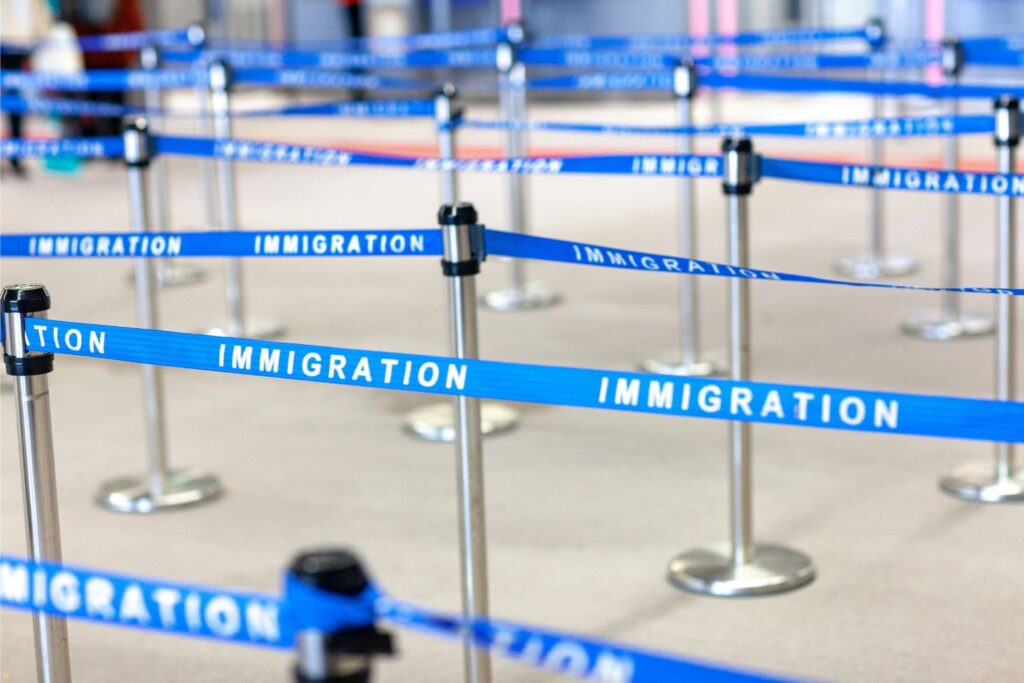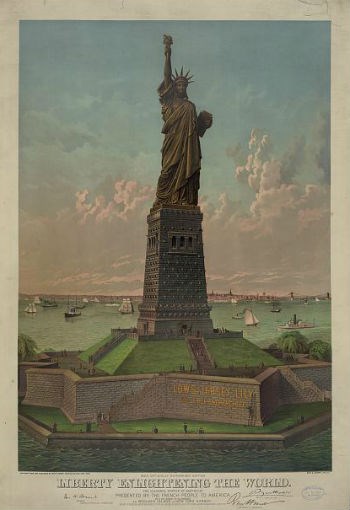
In an era of rapidly changing demographics and evolving labor markets, the United States faces a trifecta of challenges: addressing worker shortages, managing inflation, and bolstering its Gross Domestic Product (GDP) per capita. One solution that remains in the spotlight is the role of immigration. Allowing more immigrants into the U.S. workforce can be a win-win solution for the broader economy and industries like the ones we serve in the graphic arts–printing, packaging, warehousing, media, and more.
Recent Census Bureau estimates reveal the total immigrant population grew by almost 30% between 2005 and 2022 to just over 46 million people. According to an NPR September analysis, foreign-born Americans were 13.9% of the U.S. population in 2022. The vast majority of today’s immigrants are legal residents, and about a quarter tend to be unauthorized, with asylum seekers making up the rest.
Immigration had trended upward dramatically before COVID and reached a standstill in 2020. Immigration, both legal and illegal, is ticking up to a nearly all-time high today.

The notion that immigrants take away jobs from American citizens is a common misconception.
Multiple studies and economic analyses, such as this recent one from the Federal Reserve Bank of San Francisco, consistently show that immigrants contribute positively to the economy. They create jobs, add to the consumer base, and fill labor gaps that can lead to higher productivity and economic growth.
Here is a current example of the perpetuation of evil myths around immigration just from my social media feed today. Contrast this with the poem below.

“The New Colossus”
Not like the brazen giant of Greek fame,
With conquering limbs astride from land to land;
Here at our sea-washed, sunset gates shall stand
A mighty woman with a torch, whose flame
Is the imprisoned lightning, and her name
Mother of Exiles. From her beacon-hand
Glows world-wide welcome; her mild eyes command
The air-bridged harbor that twin cities frame.
“Keep, ancient lands, your storied pomp!” cries she
With silent lips. “Give me your tired, your poor,
Your huddled masses yearning to breathe free,
The wretched refuse of your teeming shore.
Send these, the homeless, tempest-tost to me,
I lift my lamp beside the golden door!”
Finding solutions to issues requires thought, dialogue, and tolerance. No one person or group will have all the answers. Solutions can evolve from a diverse forum and a system of trial and error where ideas are vetted, implemented, and vetted again. The sooner the discussion starts, the better. Without this, issues are left to fester, causing society to lose faith and become open to negative forces.
Industries like commercial printing and packaging often face critical worker shortages, particularly in specialized roles such as graphic design, machine operation, and quality control. Allowing more immigrants into the workforce can help bridge these gaps, ensuring that production remains consistent and meets market demands. This helps companies meet their commitments and creates job stability for U.S. workers by sustaining these industries.
With an estimated 9 million open jobs and 5.8 million unemployed US citizens with legal working status, the shortfall is unlikely to be filled by workers currently living in the U.S.
“You’re talking about passing up something like $1 trillion in production every year that these jobs go unfilled,” David J. Bier, associate director of immigration studies at the Cato Institute, told CNBC.
Projections from a new FWD.us-George Mason University study demonstrate that “the U.S. needs to increase immigration levels, not only to make up for the immigration shortfall seen over the past few years but also to ensure a growing labor supply for the rest of this decade. Without a growing workforce fueled by increased immigration, the U.S.’ global edge will soften, leading the country to become less competitive for talent, innovation, and productivity.”
Click here for a deeper dive into the benefits of immigrants on the US workforce and economy and here for a comprehensive look at the labor market.
Boosting GDP and Controlling Inflation
Inflation is another concern for industries reliant on raw materials and skilled labor. An influx of skilled immigrant labor can help control wage pressures by adding more workers to the labor force, thus mitigating the risk of rapid wage inflation. The resulting economic effect also helps companies in the printing and packaging industries manage production costs, preventing them from being passed onto consumers.
The FWD.us study shows that “increasing immigration would also have other positive indirect effects, including raising wages for Americans, while at the same time reducing the risk of future inflationary episodes. Under an increased immigration scenario, Americans would earn, on average, $1,000 more annually by 2040 than when immigration levels are held constant. By contrast, if the country were to return to significantly lower levels of immigration (similar to those experienced during the pandemic), the average American would stand to earn $16,000 less annually by 2040 than if immigration levels were increased.”
A robust and expanding workforce is a key driver of economic growth. Immigrants, particularly those skilled and motivated to contribute like workers Semper seeks to hire, have the potential to increase GDP per capita. This is a crucial metric for gauging the standard of living for the average American. By allowing immigrants into the labor force, we not only strengthen the economy but also improve the living standards for everyone.
Strengthening Diverse Skillsets while Amplifying Innovation
One of the most valuable contributions immigrants make to the workforce is the diversification of skills and expertise. This can be especially advantageous for industries that require a variety of talents, such as commercial printing and packaging.
A diverse talent pool in creative industries like ours often leads to innovation and creativity. Immigrants bring fresh perspectives, unique skills, and novel approaches to problem-solving. This can lead to new techniques, more appealing designs, and cost-effective production methods.
A labor market out of balance
Currently, there are around 11.5 million undocumented immigrants in the U.S., many of whom have been here for decades without a clear path toward work authorization. Obstacles to legal immigration ramped up in 2017, and the global pandemic put a near-dead stop to it. At the same time, the pandemic smoothed the way for droves of remote workers to disperse to underserviced parts of the country, putting a heavy burden on available workforces in many urban and suburban areas.
In short, the whole labor market is way out of balance, driving inflation and decreasing competitiveness.
Welcoming more immigrants into the U.S. workforce is not a panacea for all economic challenges, but it can be a substantial step in the right direction. Industries like the ones we serve stand to gain significantly from an expanded and diverse workforce. Immigrants can contribute to stabilizing worker shortages, managing inflation, and boosting take-home pay while enriching the industry’s skills and entrepreneurial spirit.
Author note:
I have met and fought, in my practice of Gracie Barre Jujitsu, with many undocumented immigrants over the years. It has been one of my greatest honors. Lowering the barriers to entry for skilled and unskilled migrants with no criminal records will benefit the country as a whole. In part, it is what has made the USA what it is.